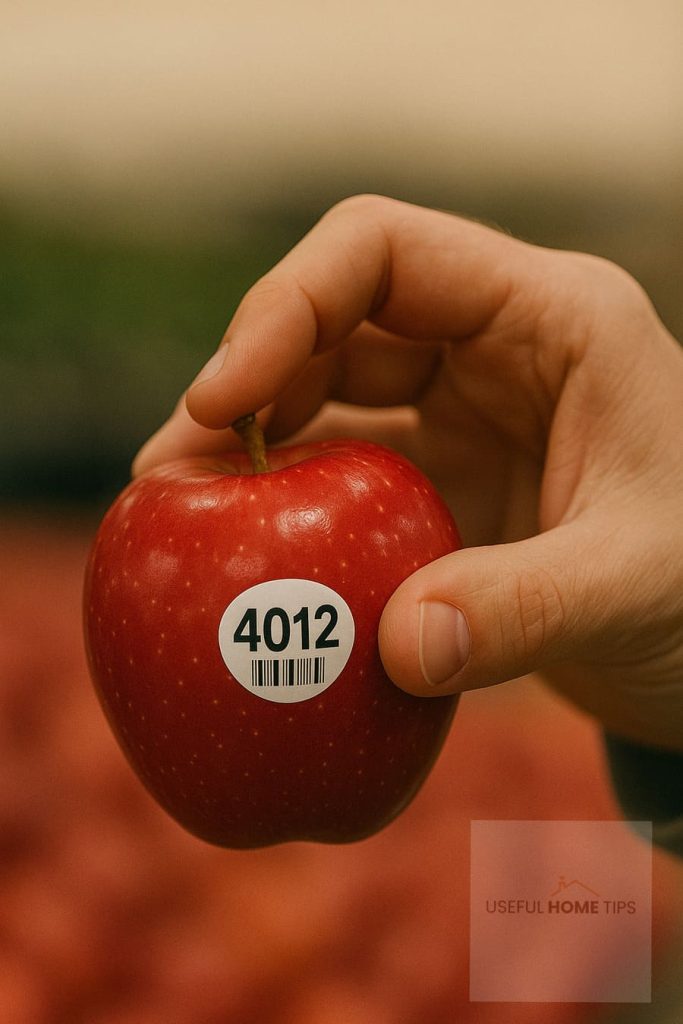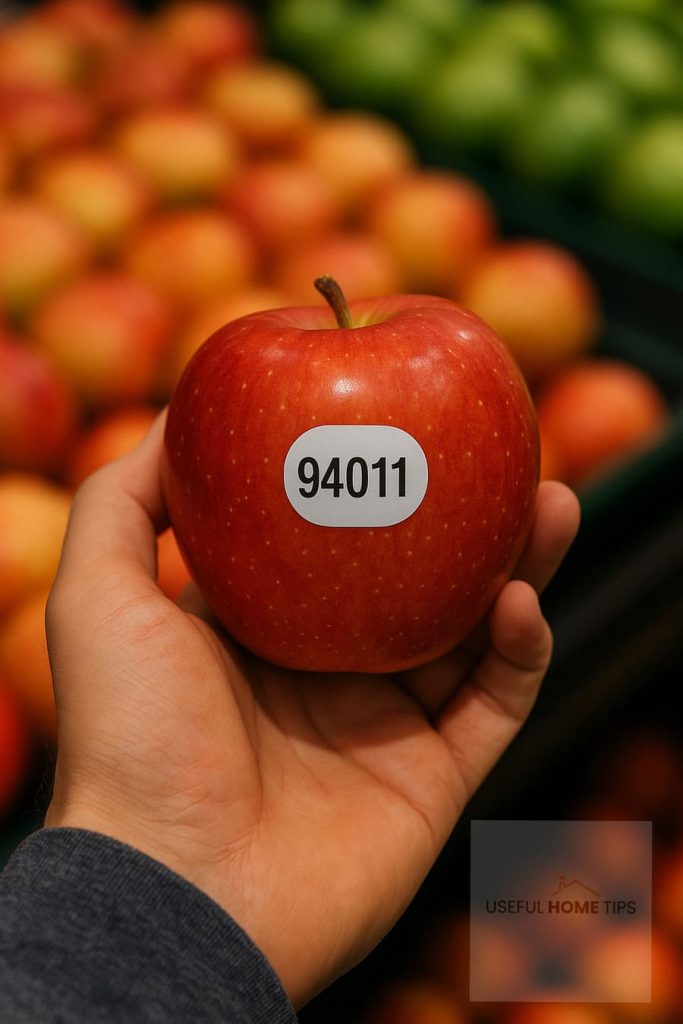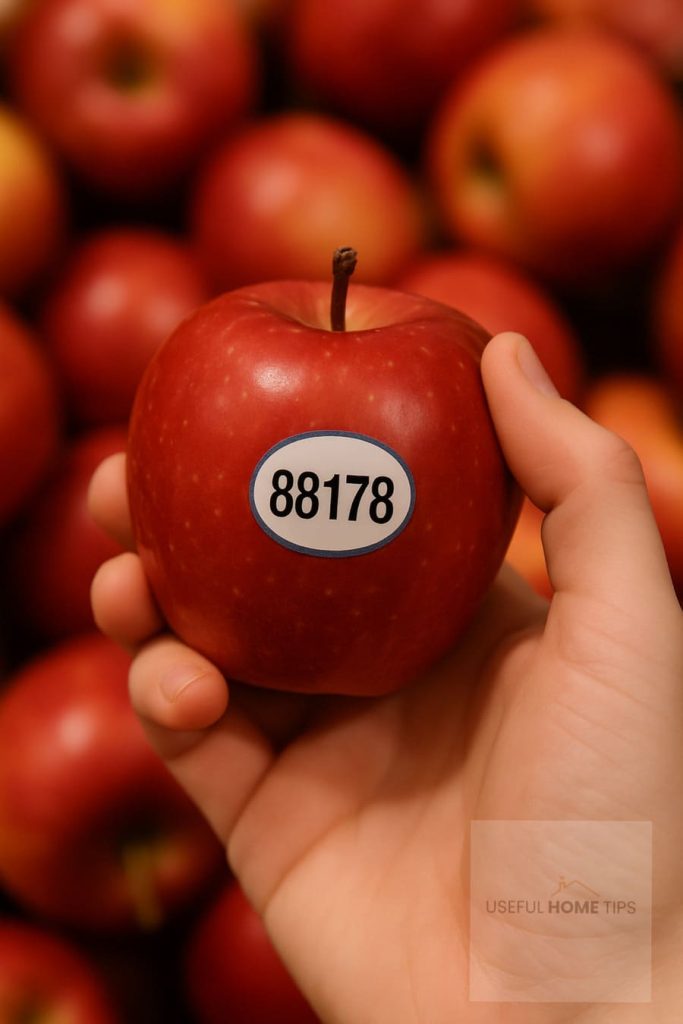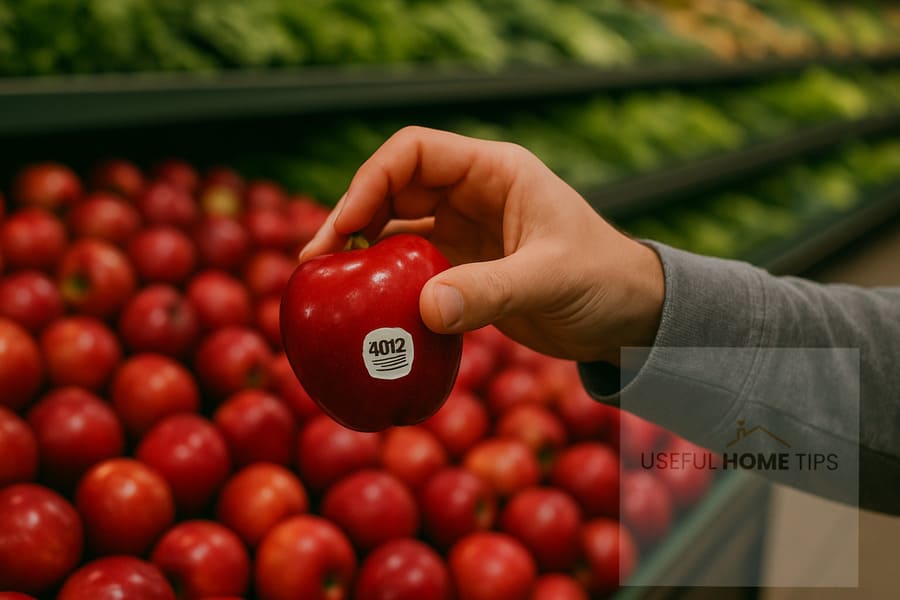You’re in the produce aisle, hand resting on a pile of glistening apples. Maybe you’re short on time, maybe you’re thinking about what your next meal will be, but whatever, you notice the one. Firm, glistening, flawless. You pick it up, maybe rub it against your shirt, and strip off that small sticker like it’s nothing.
Innocent, right?
But the catch is: that sticker is trying to tell you a secret.
Small and discreet, fruit stickers are the unsung messengers of the world of produce. We carelessly throw them away, but those numbers those Price Look-Up codes, or PLUs hold the secrets to understanding exactly how your fruit was grown. Are you biting into an apple grown with synthetic pesticides? Are those bananas actually organic, or just posing as healthy? That small sticker is the keeper of secrets. And once you do, you’ll never look at your shopping cart the same.
Secrets Behind Fruit Sticker Codes: The Ultimate Produce Truth Serum
So what are these mysterious PLU codes? They’re not random, and they’re not just for the cashier to scan.
PLU codes are part of an international standard created by the International Federation for Produce Standards (IFPS). They’re used worldwide to tell you if a product or produce was conventionally, organically, or genetically grown. Think of them as a fruit passport. Each number contains a bit of its history.
These codes are typically 4 to 5 numbers long, and the first number is your best clue. Let’s break it down.
The 3 Fruit Sticker Code Types (And What They Actually Mean)
1. 4-digit code starting with 3 or 4: Conventionally Grown

What it means: The fruit is conventionally grown
using more traditional farming methods, which often means the fruit was grown with the help of synthetic fertilizers, weed killers, and bug sprays
Example: A 4012-coded apple.
Traditional farming is not evil in and of itself, but it’s a mixed bag. On the one hand, it permits mass food production. If you’re trying to limit chemical exposure in your diet, a “4012” apple might not be your best bet.
Metaphor alert: Think of conventionally grown fruit like fast fashion, it gets the job done, but it may come with hidden costs to health and the environment.
2. 5-digit code starting with 9: Organic

What it means: The fruit was grown without synthetic chemicals or harmful pesticides and is certified organic.
Example: Bananas labeled 94011.
Organic fruits are the purest of the farm inputs. They’re grown on natural fertilizers and pesticides and meet rigorous certification requirements. Not that they’re impeccable, but it does mean they’re held to better environmentally sound and health-focused standards.
If you wish to avoid artificial additives and retain a dedication to sustainable agriculture, fruits that start with “9” are your allies.
Mind-blowing fact: Organic food isn’t just better for you, but can also heal the earth, increase biodiversity, and even reduce greenhouse gases. Every “94011” you buy is a small vote for our planet.
3. 5-digit code starting with 8: Genetically Modified (GMO)

What it is: The fruit has been gene modified in a laboratory to create some traits like shelf life, resistance to pests, or appearance improved.
Example: An 88178-numbered tomato.
GMOs are the latest thing. They can allegedly make hunger a thing of the past and reduce pesticide use, according to their supporters. Their detractors worry about unforeseen long-term health effects, environmental destruction, and corporate control of the food supply.
Here’s the twist: while “8” is designated for GMOs, you won’t see it very often. Why? Most companies that sell produce do not wish to label GMOs. Because consumers are skeptical, genetically modified fruit tends to be concealed behind vague descriptions or simply not marketed as individual produce at all.
Metaphor moment: Envision GMO-labeled fruit as a unicorn few have ever seen, much debated, and surrounded in mystery.
Why This Matters More Than You Think
Still wondering why you’d want to care about these stickers?
Let’s talk about choice.
Each time you decide on a piece of fruit, you’re voting not only for your own health, but for the planet, for food to grow, and for the kind of food culture you want to create. These stickers, as simple as they look, are tools of informed consent in your plate.”
Want to avoid unnecessary chemical exposure? Look for the “9.“
Don’t want to support GMO farming? Skip anything starting with an “8.”
Have to budget, but still want fresh produce? Go traditional, but at least know what you’re choosing.
The sticker is in your control. Forgetting it is like going past the ingredients list on a box definite, you can, but why would you?
Conclusion: The Secret Language of Stickers
The next time you’re in the produce section, step back. Look at the stickers. Those small pieces of paper are speaking, you just don’t know how to listen.
Here’s the quick summary:
- 4 digits starting with 3 or 4 = Conventional grown (could have been treated with synthetic pesticides and chemicals)
- 5 digits starting with 9 = Organic (no synthetic chemicals or GMOs)
- 5 digits starting with 8 = Genetically Modified (GMO)
- It’s not a sticker. It’s a decision.
So go ahead, be that guy who inspects the sticker before purchasing. The guy who knows what 94011 is without having to Google it. The guy who buys with intention, interest, and a little more control in his hands.
Because when it comes to your food, ignorance isn’t bliss. It’s just Unlabeled.

Numrah Fareed is a freelance writer and home organization enthusiast with a passion for practical, eco-friendly living. When not typing away at her desk, she’s experimenting with DIY cleaning hacks and helping readers simplify their routines one tip at a time.
